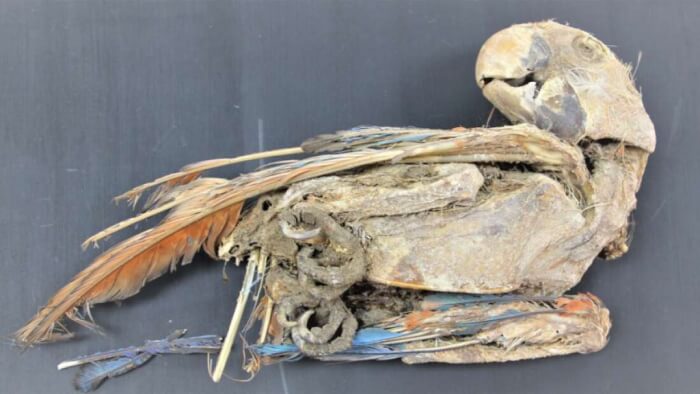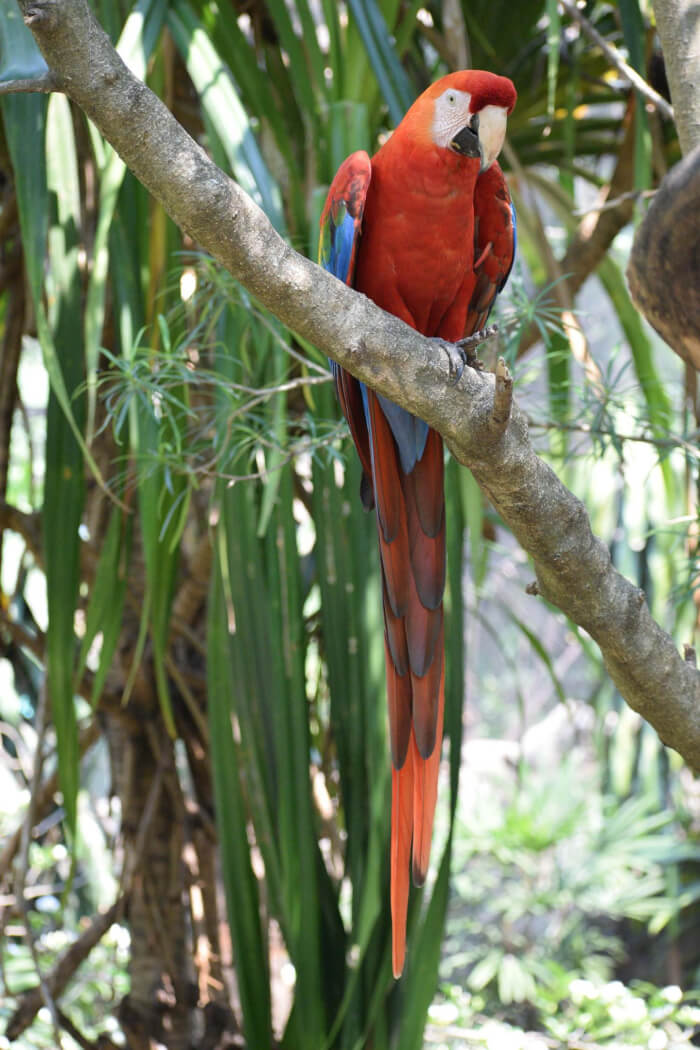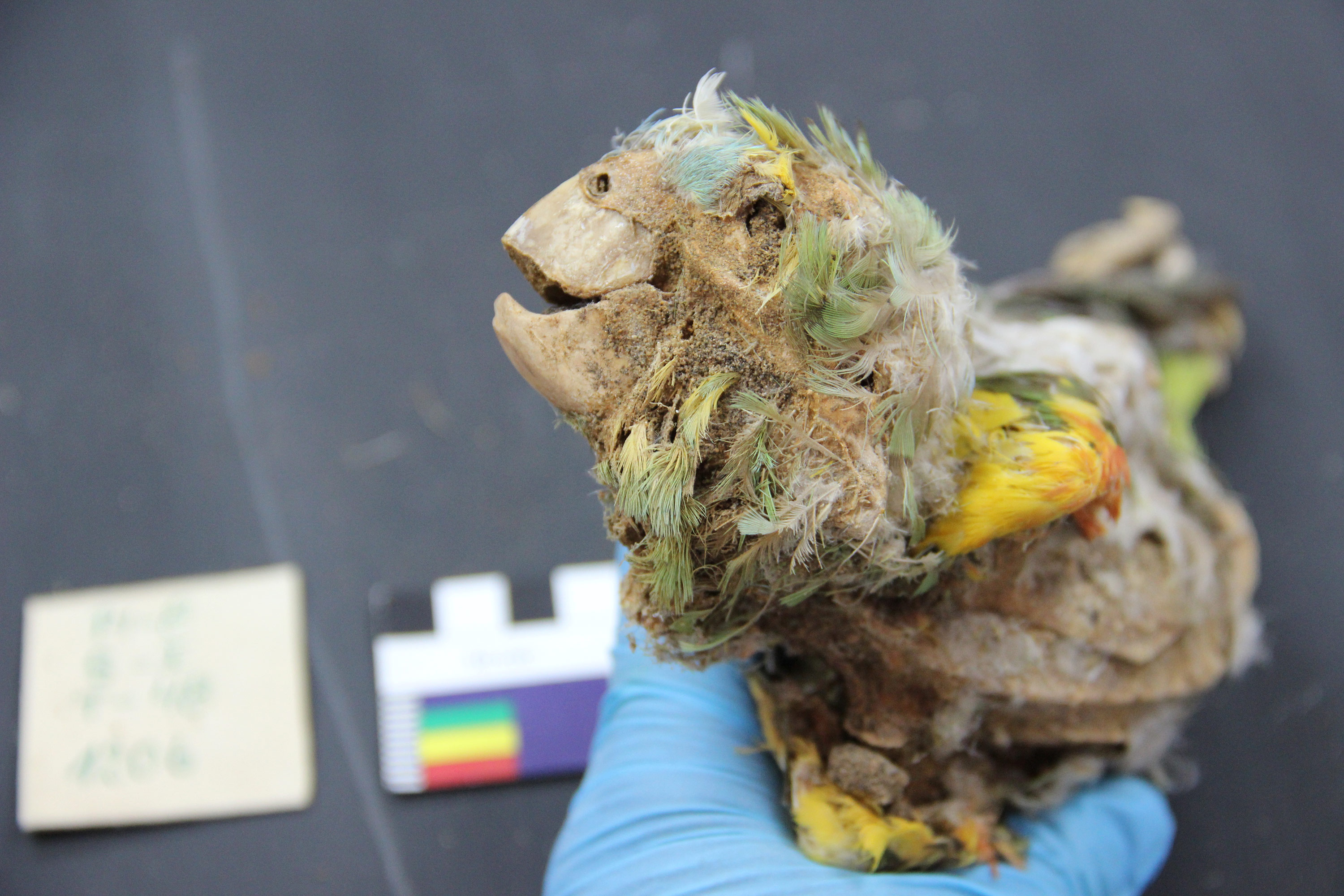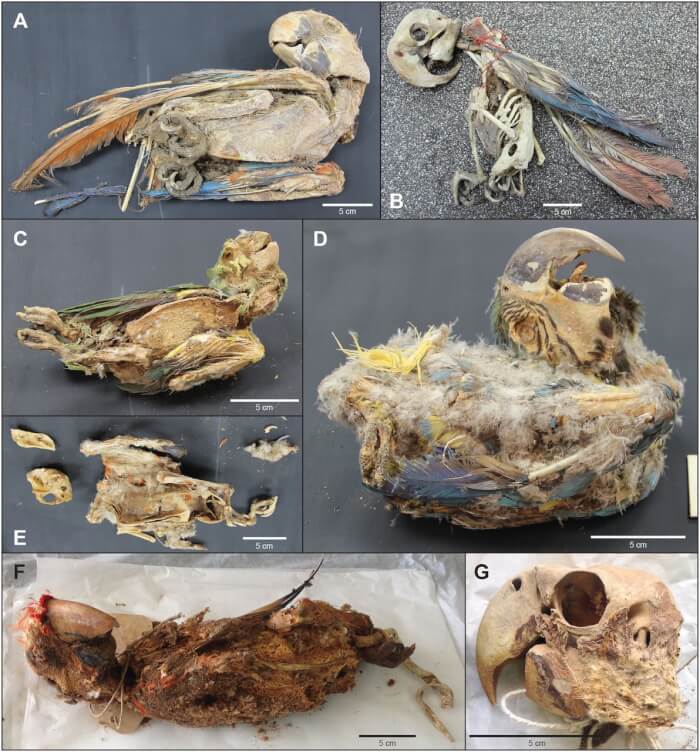Discovered Mummified Birds Transported Hundreds Of Miles Across The Longest Mountain Range In The World While Alive
A research has found that vendors used to transport parrots across the Andes a millennium ago to barter their colorful feathers to consumers in the Atamaca desert. The examination of 6 embalmed species showed that the birds were carried more than 300 miles from their homeland, in the eastern Amazon, to the arid land across the mountain range.
The significance of plumages has long been identified among the South American societies prior to the invasion of the Spanish, however, the mysteryous reasons for mummifying the parrots haven’t been clarified. Experts conducted researches on 27 samples, either whole or partially preserved.
The embalmed were found to date back to 900 years ago, from 6 species: the scarlet macaw, blue-and-yellow macaw, mealy amazon, yellow-crowned amazon, blue-fronted amazon, and mitred conure. Isotope analysis of their remains indicated that they did not die within the same location of their birth, showing that they ended up in the Atacama deserts, the driest place in the world, after having been carried across the continent in the Amazon rainforest.
Experts also claim that the parrots could not cross the mountain range themselves. Additionally, they believe that the animals were in far worse condition than the accredited animal rights standard today, as some birds were kept just for their plumage, which was plucked out as soon as it grew to an extent.
The period was attributed to warfare time, which was also surprisingly great time for commerce, as evidence of llama carvans moving about was found. The majority of the mummies were found at Pica 8, an archaeological site near an oasis community that still exists today as a trade hub.
H/T: PNAS
 Source: PNAS
Source: PNAS
The significance of plumages has long been identified among the South American societies prior to the invasion of the Spanish, however, the mysteryous reasons for mummifying the parrots haven’t been clarified. Experts conducted researches on 27 samples, either whole or partially preserved.
 Source: Pinterest
Source: Pinterest
The embalmed were found to date back to 900 years ago, from 6 species: the scarlet macaw, blue-and-yellow macaw, mealy amazon, yellow-crowned amazon, blue-fronted amazon, and mitred conure. Isotope analysis of their remains indicated that they did not die within the same location of their birth, showing that they ended up in the Atacama deserts, the driest place in the world, after having been carried across the continent in the Amazon rainforest.
 Source: PNAS
Source: PNAS
Experts also claim that the parrots could not cross the mountain range themselves. Additionally, they believe that the animals were in far worse condition than the accredited animal rights standard today, as some birds were kept just for their plumage, which was plucked out as soon as it grew to an extent.
 Source: PNAS
Source: PNAS
The period was attributed to warfare time, which was also surprisingly great time for commerce, as evidence of llama carvans moving about was found. The majority of the mummies were found at Pica 8, an archaeological site near an oasis community that still exists today as a trade hub.
H/T: PNAS
Share this article
Advertisement